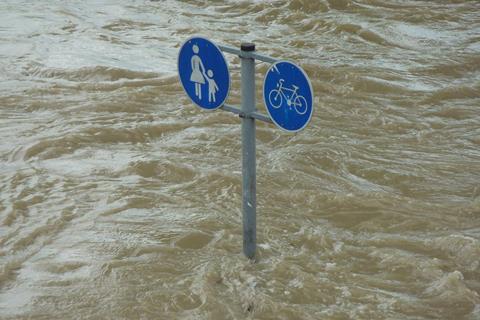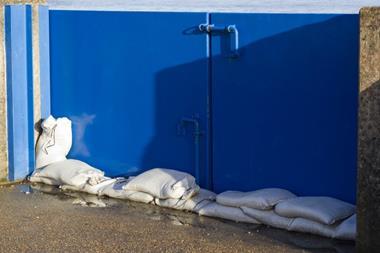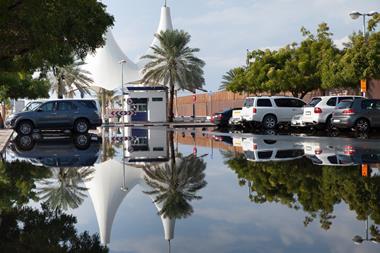As estimates of losses from the Germany floods hit between €2-3billion, experts examine key lessons for businesses
Moody’s RMS estimates that insured losses from the floods between Thursday, May 30 and Monday, June 3 in Germany will likely fall within the range of €2 billion to €3 billion.
Heavy and persistent rainfall fell across central European areas between as a series of low-pressure systems slowly crossed and remained over central Europe for several days.

This led to widespread flash and river flooding, initially of smaller rivers across southern Germany (mainly in Baden-Württemberg and Bavaria), with the Danube River later reaching flood stage in several locations as the floodwater from the headwater catchments accumulated downstream.
The flooding has hit farming, industry and small businesses hard. Reports show that fields are under water, destroying harvests. Meanwhile, manufacturers have been forced to halt production due to power failures and flooded factories.
Daniel Bernet, assistant director, model product management, Moody’s: said “This event has much in common with the central European floods of 2013, and not just because it fell on the same days in the year.
“May 2024 was among the wettest months recorded in southern Germany. Soils were fully saturated after the initial heavy rainfall on May 28 and May 30, the more prolonged rainfall associated with a typical Vb-type event then led to widespread flooding in southern Germany.
“From a flood modeling perspective, the 2013 and 2024 events again highlight how important it is to appropriately capture key elements such as antecedent conditions, Vb-type events, cross-country correlations, flood defenses, and combined fluvial and pluvial flooding.”
The Moody’s RMS loss estimate is based on an analysis of the flooding, using models that reflect insured property damage, spoiled contents, and business interruption across residential, commercial, industrial, agricultural property, and automobile lines.
It also considers sources of post-event loss amplification (PLA), recent inflationary trends, exposure growth, and increases in insurance take-up.
However, the estimate does not include insured losses to non-modeled exposures such as transport and utility infrastructure lines of business, or crops.
It includes insured losses for southern Germany, which is expected to constitute most of this event’s loss, and excludes losses from flooding in Switzerland, Austria, Czechia, Hungary, and Italy as contributions from these countries are anticipated to be minimal.
It also excludes any potential losses from subsequent flooding further downstream and/or triggered by renewed precipitation.
How to tackle the threats
Klaus Peter Roehler, member of the board of management of Allianz SE says: “We believe that extreme weather events will increase in intensity and frequency as a result of climate change.
“We therefore need a comprehensive concept against natural hazards that is based on three building blocks: prevention and protective measures to adapt to the effects of climate change, insurance cover calculated on a risk-adjusted basis, and state support in the event of extreme disasters.
“Damage to buildings can be prevented or at least reduced if we increase social risk awareness and implement comprehensive prevention and protection measures against flooding. These include higher and stronger dams, but also construction bans in flood areas, a requirement for water-resistant building materials and better flood protection systems.”
What to when a flood hits
Businesses in areas prone to flooding should ensure that they have a Flood Emergency Response Plan (FERP). This should be tested through drills and updated regularly.
FM Global says that as soon as possible after the flood, the ERT and other personnel should begin salvage procedures, beginning with the immediate drying of equipment and dehumidifying areas of critical importance.
It also suggests businesses follow these steps:
- Keep fire protection systems in service. This is vital because cleanup can result in the buildup of large piles of combustible material.
- Return any impaired fire protection systems, including alarm notification systems, to service promptly.
- Test any system potentially affected by the flood.
- Conduct all cutting and welding repairs using FM Global’s Hot Work Permit System to prevent fire.
- Assess the actual impact, determine needs and initiate planned cleanup, repair and business-resumption services.
- Check flooded buildings for structural stability before starting cleanup inside.
- Check for spilled flammable liquid, contaminants, etc., and eliminate them before other work begins.
- Remove standing water from the facility.
- Clean and dry equipment, giving attention to the most vital or susceptible pieces first.
- Check, clean and test all electrical distribution equipment and system components exposed to flood water or humidity.
- Dehumidify damp areas and dry wet insulation and building material.
- Remove flood debris from the facility and separate wet material.
- Develop a Flood Emergency Response Plan now-if you don’t have one in place.










No comments yet